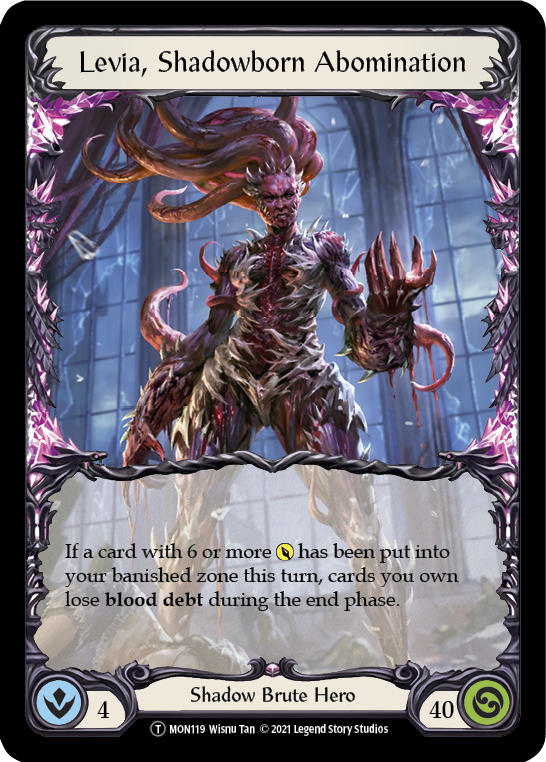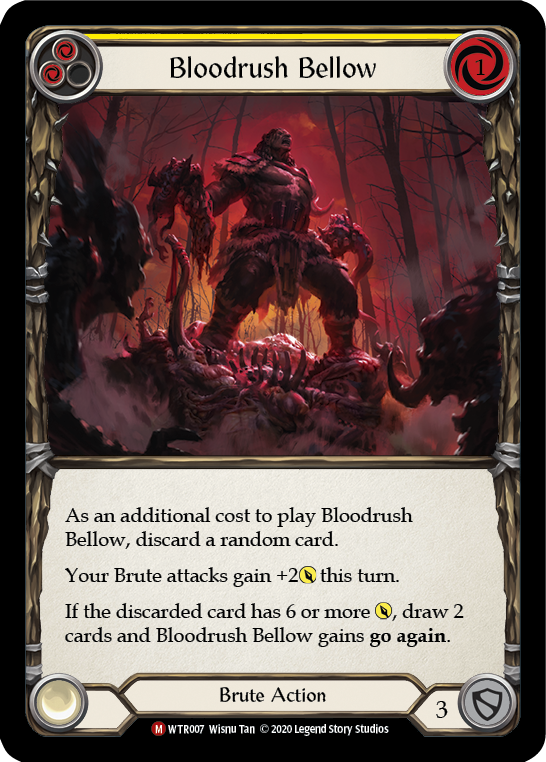Deck construction, format, the meta, game plan… there are so many aspects to keep in mind when sitting down for a Flesh and Blood game. However, perhaps the most criminally underrated is that of reading your opponent in front of you. As players, we always give out so much information to our opponent and learning to leverage this and use it against your opponent is incredibly potent to winning games where you have no business in doing so.
Playing into your opponent is extremely potent, but without a way to disrupt them or force them to block, it’s going to be extremely difficult. Generally, there are three ways to really disrupt an opponent’s turn and force them to block.
- Present on-hit effects (the best and most consistent)
- Present lethal damage
- Present more damage than they can come back with even with a four/five-card hand
For decks such in the classes of Ranger, Ninja and Runeblade, the number of on-hit effects you present is going to be the critical factor in how you can disrupt your opponent. On the other hand, classes like Brute, Mechanologist and Warrior must work a little harder to force blocks and disrupt turns. For the former classes, the answer to the question posed above is easy. You can easily disrupt your opponent with your on-hits, punishing them badly for not blocking when they should be. The latter groups however must rely many times purely on-damage output, making sure that on the turns they can explode for damage, the opponent is going to wince at the concept of taking all the damage without blocking.


One of the most critical aspects of playing the player is noticing their patterns in blocking throughout the game. For example, if I were playing Oldhim and played out a Polar Blast (Blue), and my opponent choose to keep their cards and give me dominate on my next attack, then it’s highly likely they would do so in the future in a similar context. The dominate might not be relevant on my current turn, but in the future knowing how my opponent reacts to this card is valuable information.
Now keep in mind, this is context dependent. If you play Polar Blast (Blue) off a three-card hand and both of you have ample life, that is very different from playing Polar Blast (Blue) in the late game after you just soaked 10 or more damage to play out your four-card hand. Your opponent could surely react differently. Generally, however, people are quite set in their block patterns within similar contexts, using this knowledge to you advantage is quite useful.
Let’s give one more example. The blocking pattern of Kodachis is almost always played the same by all players. They take the first one, block the second (to prevent the Mask of Momentum draw effect) and then see what the Ninja player presents off the third attack. This knowledge can be used by the Ninja player to effectively play something like a Push the Point (Red), which gains a strong buff if the last attack on the chain hit. Since people are unlikely to deviate from their blocking patterns, especially with the Kodachis, you can reliably play Push the Point (Red) for six or seven (with Ira) as your second attack and have a strong turn off of two cards.
Pivot turns are an aspect of Flesh and Blood that are extremely complex and interesting They make up the most important turns in the game, and if you can shut them down, you can find yourself in a very advantageous situation going forward. The nature of pivot turns means they can easily result in the output of 15 to 20 damage if unblocked, however, they require every card and resource usually and are very sensitive to losing these resources to block or outside interference like discards and Frostbite. Manage to do either when your opponent is planning to pivot, and you’ll be able to easily reduce their damage output from 15 to 20 down to under 10.
As a result of the drastic damage reduction, realizing when your opponent has a pivot, and simultaneously adjusting your turn into it is incredibly important. Generally, those who are trying to pivot will not be blocking at all on your turns, and if so, do it very begrudgingly.
Depending on you class, you need to be presenting as many relevant on-hits and/or damage to them on this turn. Rangers in particular are extremely difficult to pivot against due to their disruption abilities, but other classes as well need to present on-hits which can extend the length and power of their turns if left unchecked. If you’re mainly a damage-based class, then this is fine too; rather than setting up your next turn down the line, this is the time to push as much damage as possible through. Since your game plan is to present lethal as quickly as possible, this is going be a great time to push damage through since your opponent won’t be blocking at all.
For example, Levia playing a Bloodrush Bellow before her opponent’s pivot turn could easily mean 18 damage over the course of the turn left unchecked. For many classes who can output damage like this, you’ll start to see your opponent break down anxiously as they realize that their pivot isn’t going to be relevant if they simply soak up all your damage, and they may just start blocking during your turn in a nervous frenzy to try and save some life instead.
As you get better and better at reading your opponent, you’ll start to notice just how much information you can gain from simply raising your head off the game and seeing what’s going on over on the other side of the table. All these minute aspects of TCGs were lost for the online portion of the game, but now that we’re returning to in-store play, make sure that in the next event you’re “playing the player” as much as you play out your deck.








